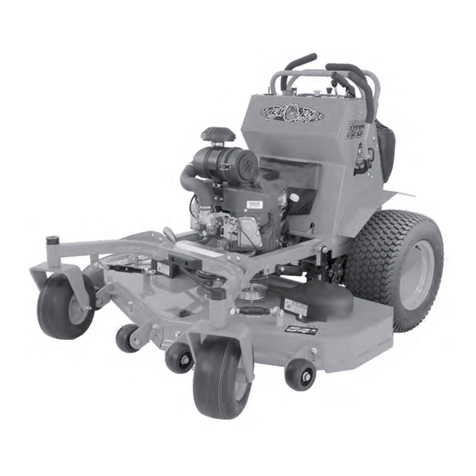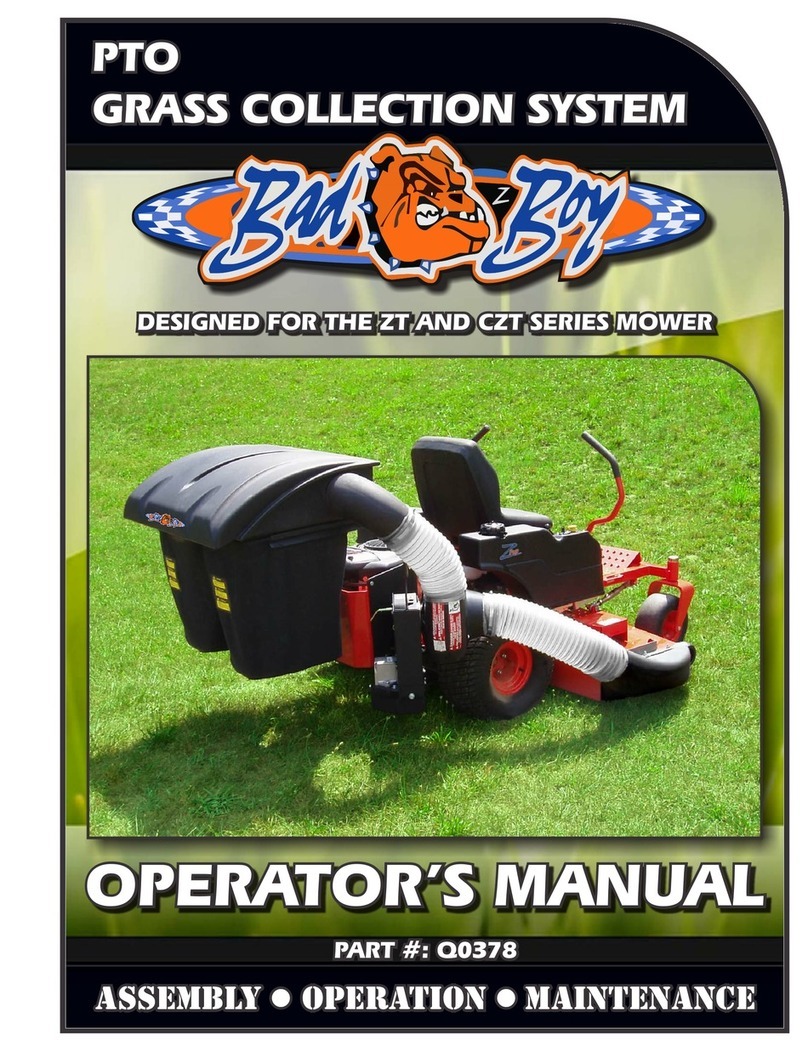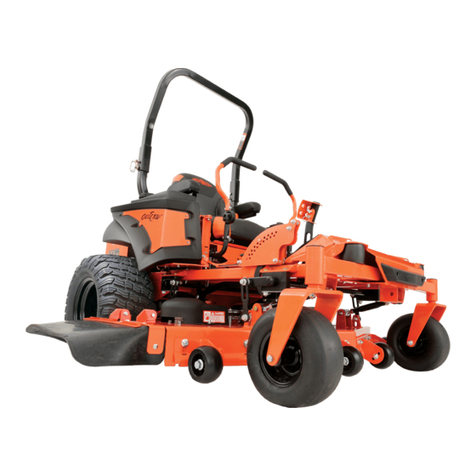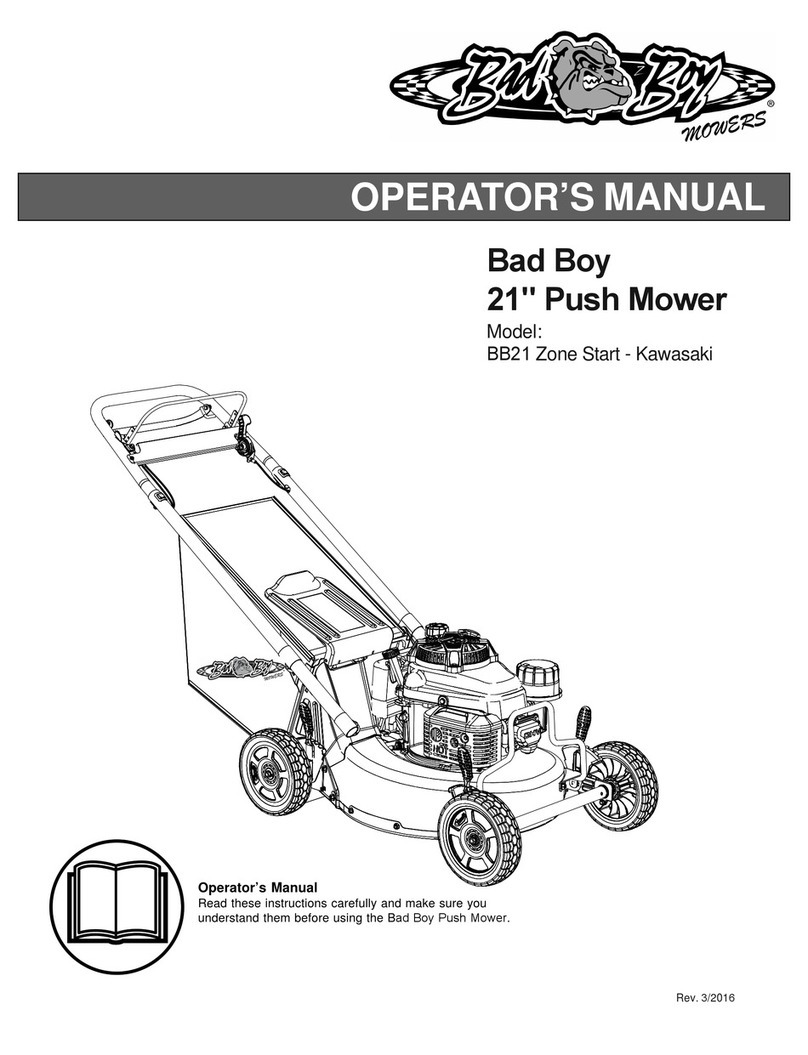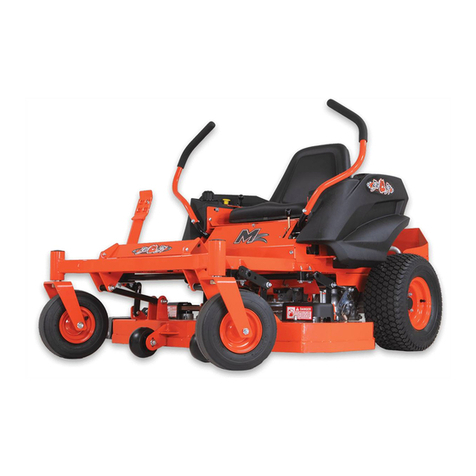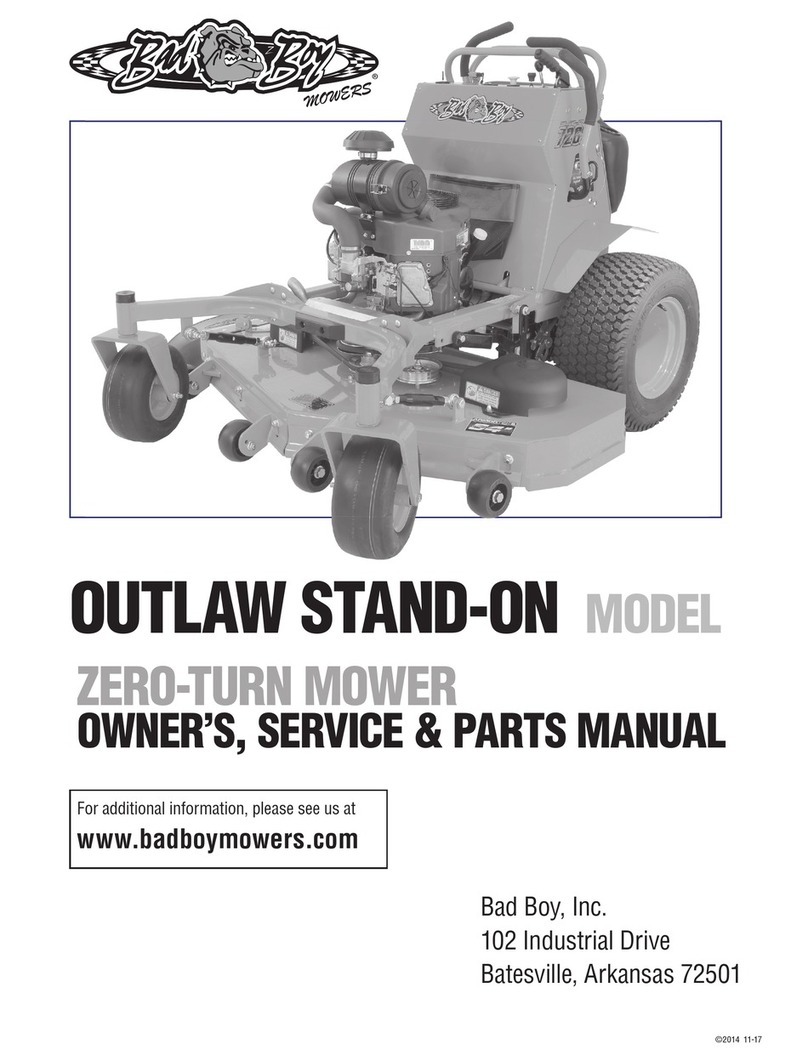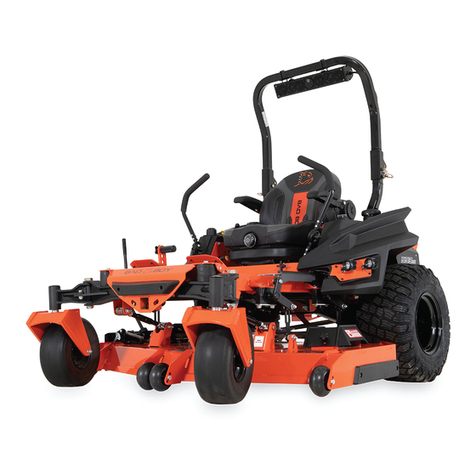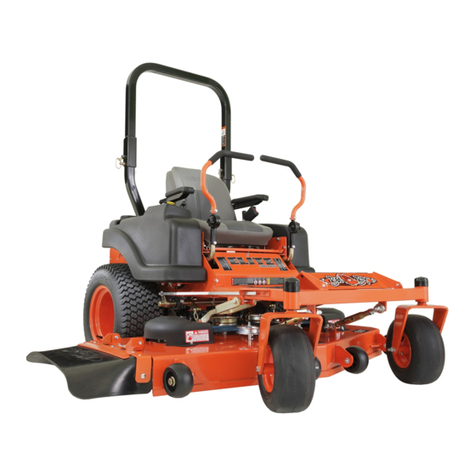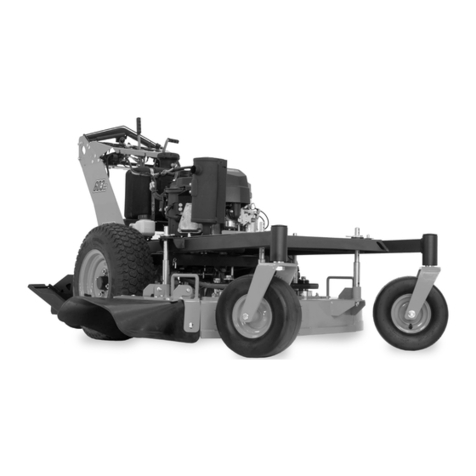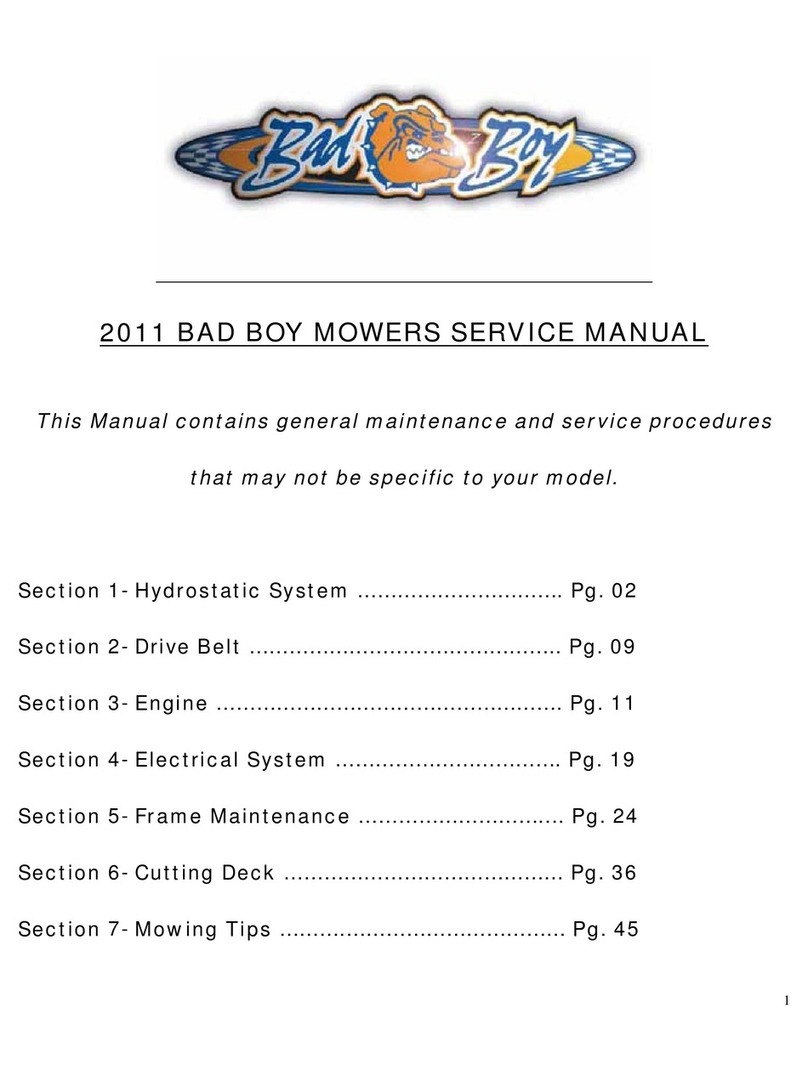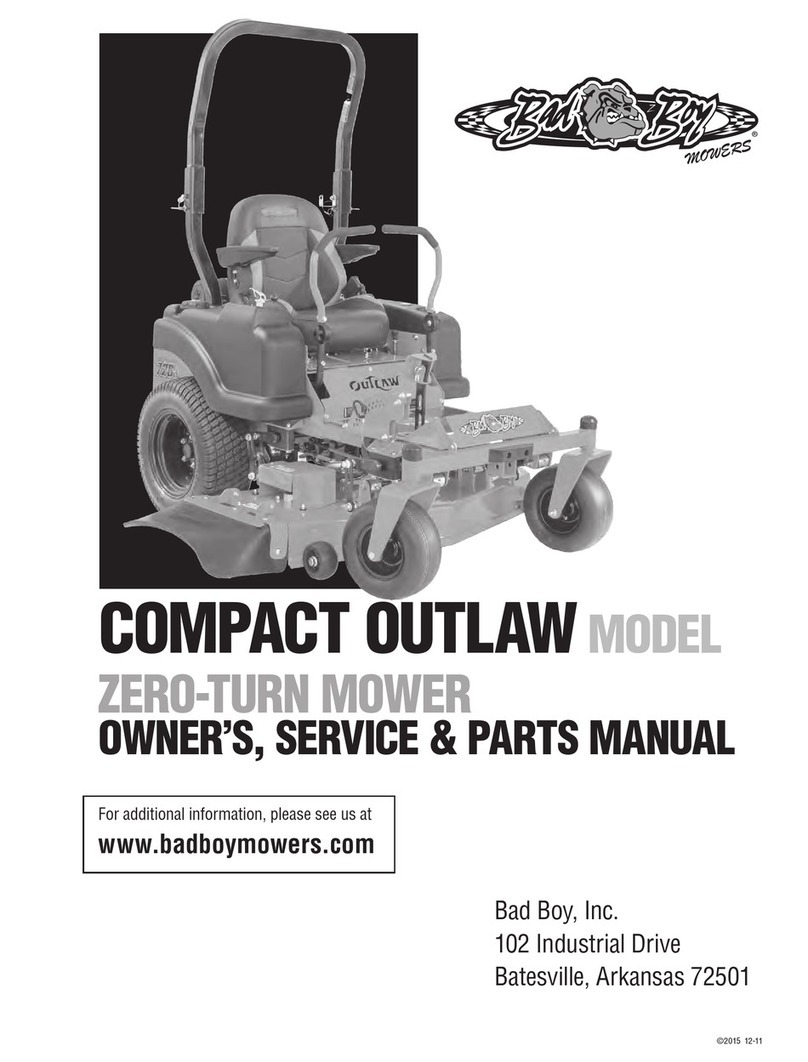
SECTION 2: MOWER SAFETYGUIDELINES
Never allow untrained people to operate this machine. It is the owner’s responsibility to get training and see to it that anyone who has
permission to use your machine receives the proper training. Do not mow around people. The factory discharge chute is designed
to deflect debris downward, but it could be possible for debris to be thrown in a way that can cause damage to people or property.
Seek additional training when possible to learn more about safety techniques and practices. This cutting machine is capable of
amputating hands and feet and throwing objects. Failure to observe the following safety instructions could result
in serious injury or death.
GENERAL OPERATION
2.1 Read, understand, and follow all instructions on the machine and in the manual before starting.
2.2 Do not put hands or feet near rotating parts or under the machine. Keep clear of the discharge opening at all times.
2.3 Always remain seated while operating the machine. If the machine is equipped with Roll Over Protection (ROPs), always buckle
your seat belt.
2.4 Only allow responsible adults who are familiar with the instructions to operate this machine.
2.5 Clear the area of objects such as rocks, wire, toys, etc., which could be thrown by the blades.
2.6 Always maintain a safe distance from people and pets just prior to, and during, operation. Stop the machine if anyone enters the area.
2.7 Never carry passengers.
2.8 Do not mow in reverse unless absolutely necessary. Always look down and behind before and while backing.
2.9 Never direct discharged material toward anyone. Avoid discharging material against a wall or obstruction as material may
ricochet back toward the operator. Stop the blades when crossing gravel surfaces.
2.10 Never operate the machine without the discharge chute, grass catcher, or other safety devices correctly in place and functioning
properly.
2.11 Slow down before turning.
2.12 Always disengage blades, place steering controls in neutral, engage parking brake, and remove ignition key when leaving
operators seat. Never leave a running machine unattended.
2.13 Disengage blades when not mowing. Shut off engine and wait for all parts to come to a complete stop before cleaning the
machine, inspecting the machine for damage, removing the grass catcher, or unclogging the discharge guard.
2.14 Always operate machine in daylight or with adequate working lights.
2.15 Do not operate the machine while under the influence of alcohol or drugs.
2.16 Watch for traffic when operating near or crossing roadways.
2.17 Always wear eye protection when operating or servicing the machine.
2.18 Always wear ear protection, such as earplugs, while mowing.
2.19 Use extra care when loading or unloading the machine into a trailer or truck.
2.20 Be alert of surroundings. Watch for rocks, stumps, mounds, depressions, and low hanging limbs or objects that could be
potentially hazardous while mowing.
2.21 Data indicates that operators 60 years of age and above are involved in a large percentage of riding mower related injuries.
These operators should periodically evaluate their ability to operate the riding mower safely enough to protect themselves and
others from serious injury.
PAGE 5


